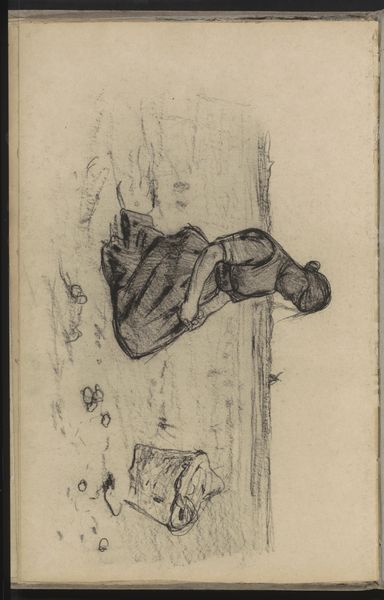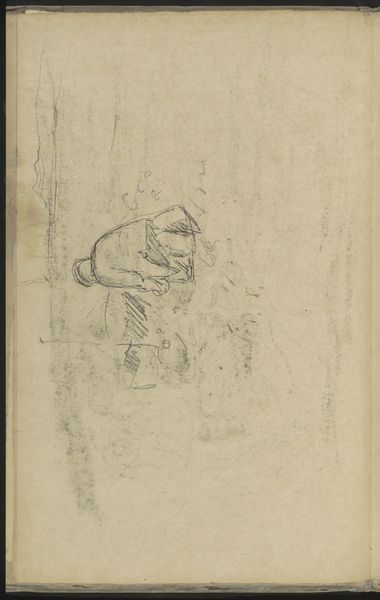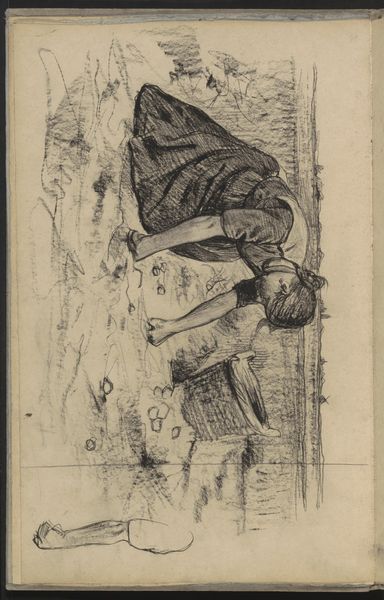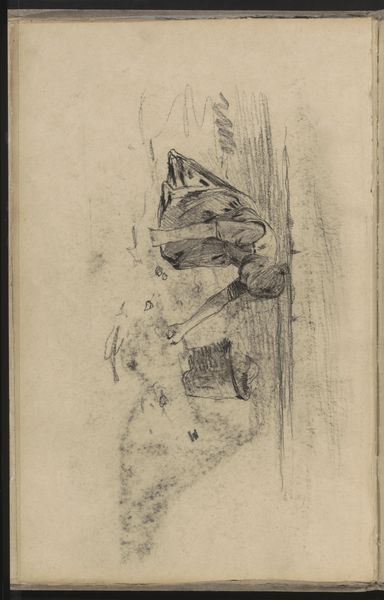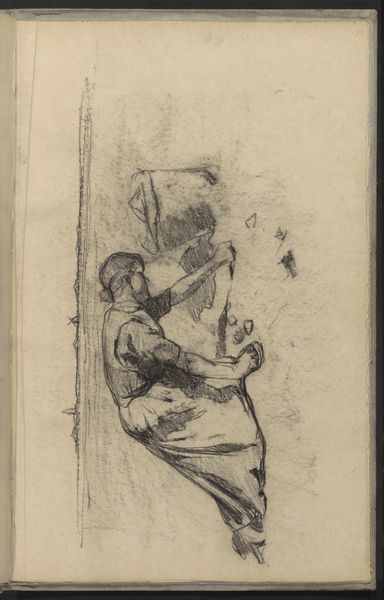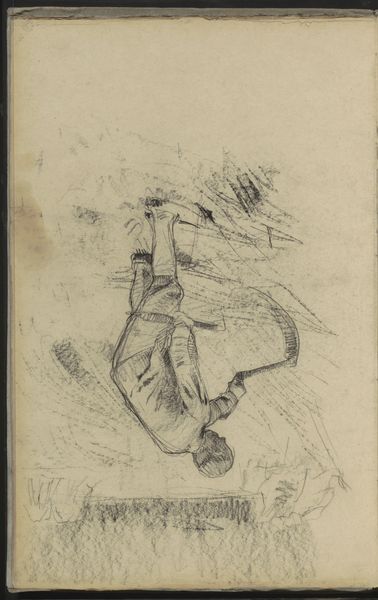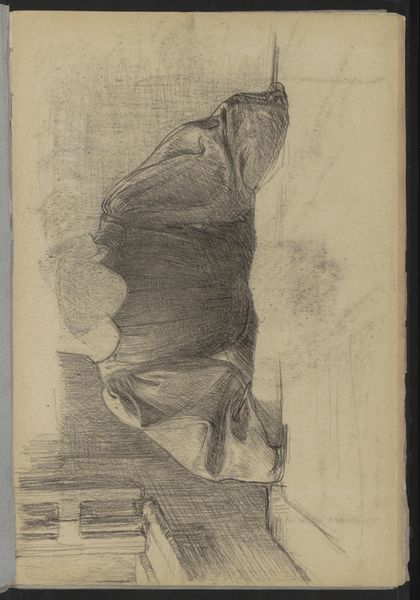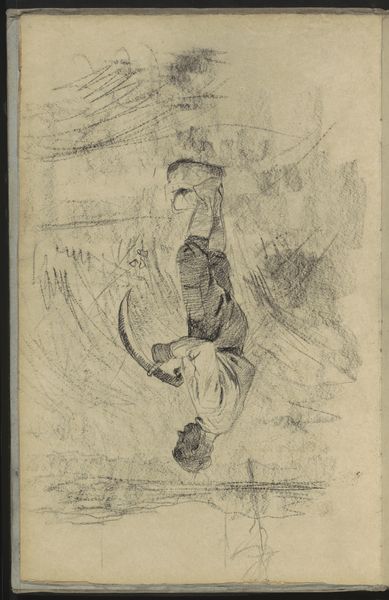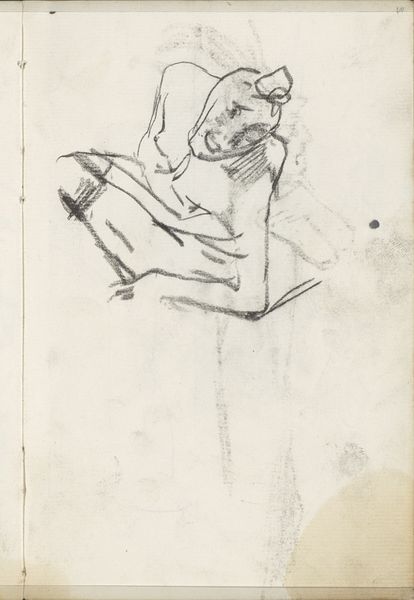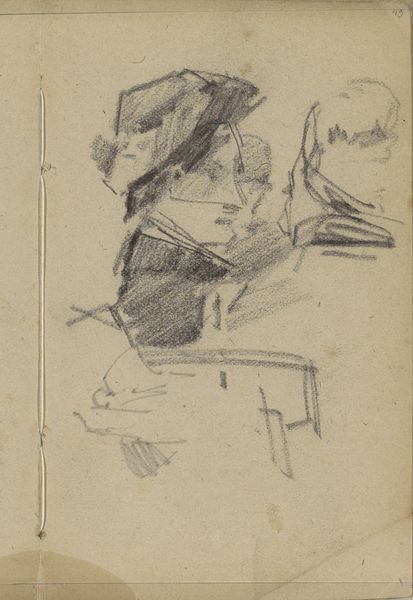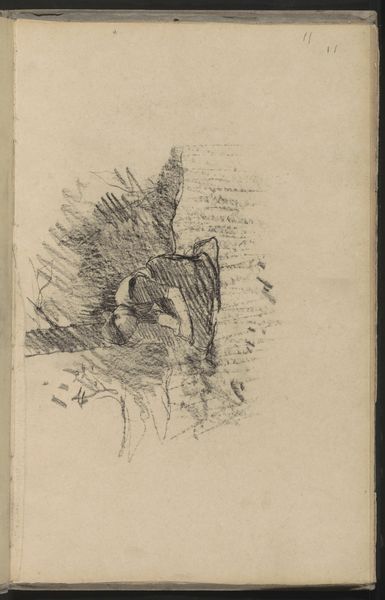
drawing, pencil
#
portrait
#
drawing
#
amateur sketch
#
toned paper
#
light pencil work
#
pencil sketch
#
sketch book
#
incomplete sketchy
#
figuration
#
personal sketchbook
#
pen-ink sketch
#
pencil
#
sketchbook drawing
#
genre-painting
#
sketchbook art
#
realism
Copyright: Rijks Museum: Open Domain
Curator: The piece before us, dating from around 1886, is entitled "Vrouw op een stoel in een interieur," or "Woman in a Chair in an Interior," created by Willem Witsen and now residing at the Rijksmuseum. Editor: It strikes me as a rather intimate glimpse. The visible sketch lines create a sense of immediacy, as if we’re peering into the artist’s private sketchbook. There is an intriguing weight given to the lower body of the seated figure; one can sense the weight distribution across her lower back, bottom and legs. Curator: Indeed. Witsen, known for his realist approach, uses pencil on paper here. We might consider how the texture and tone of the paper itself contribute to the work. Was it chosen deliberately? What was the nature and process behind his acquisition and handling of materials? Editor: And how the unfinished quality pushes against traditional portraiture. Usually, a formal portrait broadcasts status, wealth, authority... Instead, we’re confronted with something decidedly more humble, a mundane scene that feels rather contemporary in its rejection of academic rigor. How does its institutional setting impact the reception of an avowedly incomplete or personal image? Curator: Precisely. It invites questions about the artistic labor itself, where it was done, under what conditions. And about the consumption of these artworks: Who bought Witsen’s drawings, and how might their appreciation have been shaped by the burgeoning market for such informal pieces? Editor: It really pulls back the curtain. And it challenges the very concept of what we consider “finished” or “worthy” of display in a museum. What decisions did the curators have to make to put this particular page on the wall instead of hiding it within some dusty archive? Curator: I find myself focusing on how this seemingly spontaneous sketch reveals much about the late 19th-century art world—the networks of patronage, the changing definitions of art, and even the simple materials used in creating the artwork. Editor: And I see in it a democratizing impulse, questioning traditional power structures and broadening the definition of what constitutes art and what spaces it may occupy. Curator: A pertinent intersection, I think. Editor: Agreed.
Comments
No comments
Be the first to comment and join the conversation on the ultimate creative platform.
